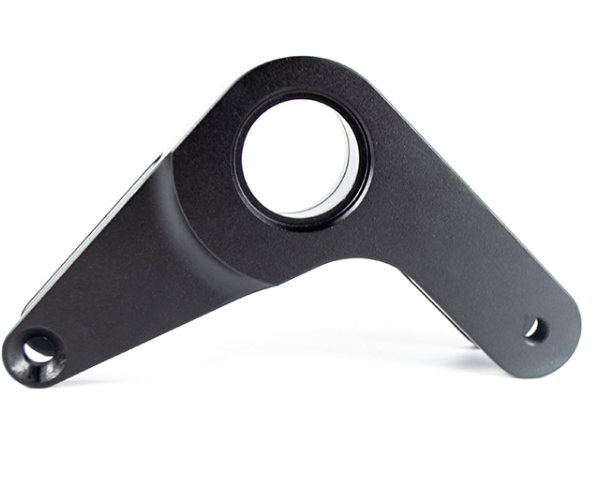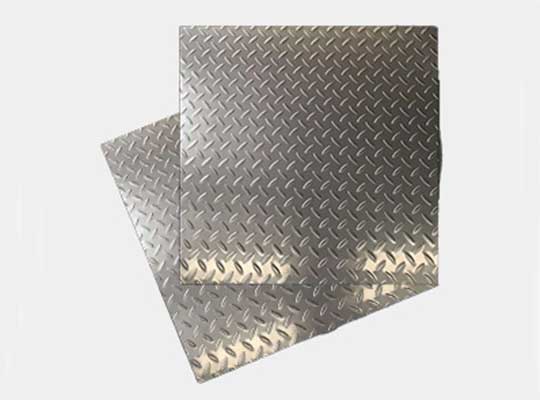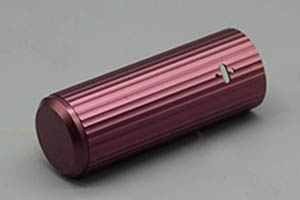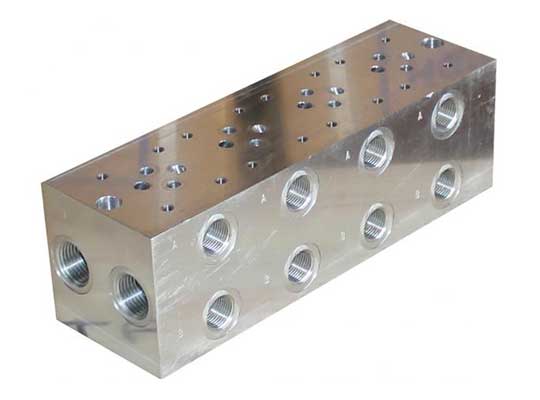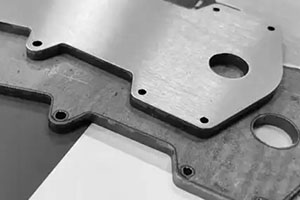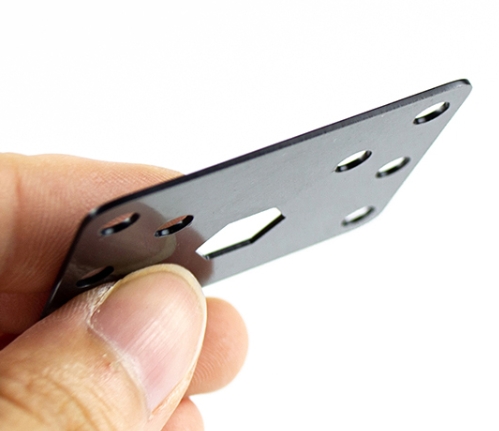Choosing the right materials for silicone Vacuum casting is make-or-break for your project—whether you’re making small-batch prototypes or low-volume production parts. The process relies on three core material types: prototype materials (to create the master template), mold materials (to make the flexible silicone mold), そして casting materials (to produce the final parts). 下に, we break down each category with clear data, use cases, and tips to help you pick the perfect materials for your needs.
1. Prototype Materials: The “Template” for Your Silicone Mold
The master prototype is the foundation of silicone vacuum casting—its material directly impacts how well the mold captures details and how durable the template is. Two main techniques are used to make prototypes, each with specific material strengths:
| Prototyping Technique | 一般的な材料 | キープロパティ | に最適です | Performance Data |
| CNC加工 | 腹筋, アルミニウム, Stainless Steel | 高精度, smooth surface finish | Prototypes needing tight tolerances (例えば。, ギア, 機械部品) | 公差: ±0.01mm; 表面仕上げ: Ra 0.2–0.8μm |
| SLA 3D Printing | Photopolymer Resins (例えば。, Formlabs Grey Resin) | Complex shape capability, fine detail capture | Intricate designs (例えば。, textured phone cases, small medical device components) | 表面仕上げ: Ra 0.1–0.3μm; Detail resolution: 0.025mm |
Practical tip: If you’re making a prototype for a functional part (like a hinge), CNC-machined ABS is better—it has a higher impact strength (20 KJ /) than SLA resins (10–15 kJ/m²). For decorative parts with tiny patterns, SLA 3D印刷 is the way to go, as it can replicate details as small as a grain of sand.
2. Mold Materials: Flexible Silicone for Replicating Details
The mold material in silicone vacuum casting is almost always RTV (Room Temperature Vulcanization) シリコーン—a liquid that cures into a soft, elastic mold capable of capturing every detail of the master prototype. There are two main types of RTV silicone, each suited to different project needs:
| Mold Material Type | キープロパティ | Mold Life (Uses) | Shrinkage Rate | 料金 (kgあたり) | に最適です |
| Addition-Cure Silicone | Low shrinkage, high durability, no odor | 20–50 | 0.1–0.3% | \(25- )40 | High-volume low runs (30–50部品) or complex prototypes (例えば。, アンダーカットのある部品) |
| Condensation-Cure Silicone | Lower cost, faster cure, slight odor | 10–20 | 0.5–1.0% | \(15- )25 | 小さなラン (10–20部品) or simple shapes (例えば。, basic housings) |
なぜこれが重要なのか: A low shrinkage rate (like 0.1–0.3% for addition-cure silicone) ensures your final cast parts match the master prototype’s size almost exactly. 例えば, if your prototype is 10cm long, an addition-cure mold will produce parts that are 9.997–9.999cm long—critical for parts that need to fit together.
3. Casting Materials: The “Final Part” 材料
Casting materials are what you inject into the silicone mold to make your end product. They range from common plastics to specialized rubbers and 耐高温 (high-temperature resistant) 材料, each tailored to specific performance needs:
| Casting Material Type | Specific Materials | キープロパティ | Typical Applications | Performance Highlights |
| Thermoplastic-Like Resins | 腹筋, PC, pp, PA, PMMA | Mimic production plastics; good strength/durability | Consumer electronics (電話ケース), automotive accessories (ノブ), household goods (container lids) | – 腹筋: Impact strength 20 KJ /- PC: Heat resistance up to 120°C; 透光率 (光透過率) 88%- PMMA: 透光率 92% (close to glass); スクラッチ耐性 |
| Flexible Materials | Rubber, Soft PU Resins | Elasticity, grip, shock absorption | Grips (リモートコントロール), アザラシ (water bottles), O-rings (pipes) | Shore hardness: A 30–60; Elastic recovery rate >90% |
| High-Temperature Resistant Materials | PPS, PEI, Silicone Rubbers | Withstand extreme heat (150–250°C) | エンジンコンポーネント, industrial sensors, high-heat tools | – PPS: Heat resistance 220°C- PEI: 250°C; chemical resistance to oils/solvents |
| 専門材料 | PVC, Conductive Resins | Customizable hardness (PVC); electrical conductivity (conductive resins) | Cable insulation (PVC), electronic connectors (conductive resins) | – PVC: Hardness range Shore A 60–D 80- Conductive resins: Resistivity <10⁻³ Ω·cm |
Cost note: Thermoplastic-like resins (例えば。, 腹筋, PC) 料金 \(18- )30 kgあたり, while high-temperature materials (例えば。, PEI) can cost \(50- )80 kgあたり. This makes thermoplastics a better choice for budget-sensitive projects without extreme heat needs.
4. Key Factors to Choose the Right Materials for Your Project
With so many options, it’s easy to feel overwhelmed. Use these 5 factors to narrow down your choices—they’ll help you balance performance, 料金, and usability:
- Functional Needs: If your part needs to be transparent (例えば。, a lens), pick PMMA or transparent PC. If it needs to handle heat (例えば。, a coffee maker part), go for PPS or PEI.
- バッチサイズ: のために 30+ 部品, 使用 addition-cure silicone (longer mold life) to avoid re-making molds. For 10–20 parts, condensation-cure silicone saves money.
- Prototype Complexity: Intricate designs (例えば。, tiny text) need SLA 3D印刷 with photopolymer resin—CNC machining can’t capture ultra-fine details.
- 料金: If you’re testing a new design, start with cheaper materials (例えば。, condensation-cure silicone + PP resin) before upgrading to higher-cost options.
- Processing Ease: 柔軟な部品 (例えば。, グリップ) are easier to cast with soft PU resins—they demold faster than rigid materials and don’t crack the silicone mold.
Yigu Technologyの視点
Yiguテクノロジーで, we believe material selection for silicone Vacuum casting should align with both project goals and budget. For clients making functional prototypes, we often recommend CNC-machined ABS for masters (精度 + 耐久性) and rigid PC/PA casting resins (mimic production parts). For complex, 装飾的な部分, SLA 3D印刷 + addition-cure silicone works best—captures details while keeping mold costs low. We also guide clients away from over-specifying: if a part doesn’t need high heat resistance, choosing PC over PEI cuts costs by 50% without sacrificing quality. Our goal is to help you get the right materials for the job, not the most expensive ones.
よくある質問
- I need to make transparent parts—what casting material should I use?
Opt for PMMA or transparent PC. PMMA has a higher 透光率 (92% vs. PC’s 88%) and is cheaper (\(25- )30/kg vs. PC’s \(28- )35/kg), making it better for non-heat-exposed parts (例えば。, ディスプレイカバー). If the part needs to handle mild heat (up to 120°C), choose transparent PC for extra durability.
- How long does a silicone mold last, and what affects its life?
Mold life depends on the material: addition-cure silicone lasts 20–50 uses, その間 condensation-cure lasts 10–20. Factors like casting material (abrasive resins wear molds faster) and demolding care (pulling parts gently vs. tearing) also matter. To extend life, use mold release spray and avoid casting high-temperature resins (over 200°C) in standard RTV silicone.
- Can I use silicone Vacuum casting for food-safe parts?
Yes—but you need food-grade materials. 選ぶ FDA-approved silicone カビ用 (例えば。, Dow Corning 734) and food-safe casting resins (例えば。, food-grade PP or silicone rubber). Avoid materials like PVC (not food-safe) and always ask for certification to ensure compliance with safety standards.
